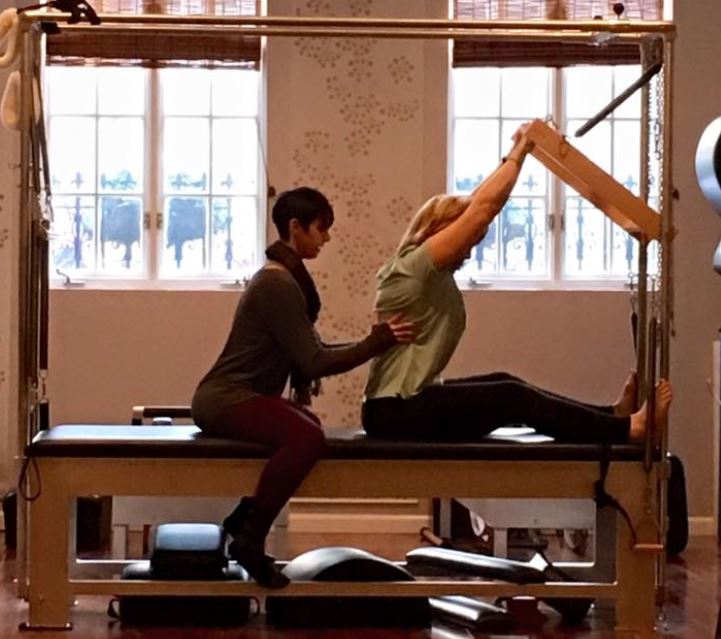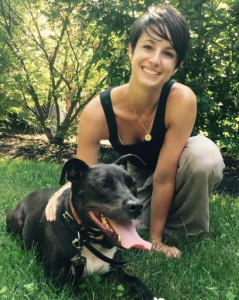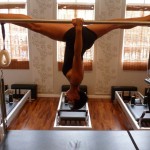You Don’t Have to Reinvent the Wheel … If You Know How to Use It
by Aubrey Johnson
Aug 30 2017
If someone told you they reinvented the wheel because it didn’t do a good enough job, how would you respond? My response would be “I’m curious…how did the wheel fail you?” They might say something like “The wheel would only spin some of the time, so I added some widgets to make it better.” My response would be “Did you ever consider that you might have misunderstood how the wheel was designed and intended to be used? Maybe you didn’t learn everything you possibly could about the wheel before you started changing it.”
This is the scenario that goes through my head when I read/hear experiences about how “Pilates couldn’t INSERT UNATTAINED GOAL HERE for me, so I made this up instead.” Thanks to those who share experiences like that because it illustrates the dire need for clarification on what we mean when we say Pilates.
I recently attended a workshop on Pilates for Scoliosis and also read an article on Pilates Intel that shed light on how Pilates is perceived by many teachers/clients that are living with chronic issues. People truly believe that Pilates, in its original essence, can’t help them do the things they want to do. This is unfortunate as this isn’t the real truth; it’s simply a misunderstanding. As a Pilates teacher, mentor, and teacher trainer, it tells me there aren’t enough of us out there being great at what we do and educating the masses on what Pilates actually provides – the ability to change people’s bodies and minds for the better without having to change the equipment and/or invent new exercises.
What’s wrong with making up exercises if it helps someone accomplish something, you ask? Absolutely nothing at all, except that you’re confusing the masses on what Pilates actually is and what it CAN do. Anything you’re looking for is already built into the method, but most people don’t know where to look. If you throw in other disciplines with Pilates, it becomes watered down and the magic of this amazing method drowns in sorrow. If you decide you need to water it down instead of clearly break it down, it can’t be a surprise when your body doesn’t respond in the way you were hoping it to. Pilates couldn’t fulfill its job for you because you didn’t dig deep enough! As Pilates teachers, we need to choose the appropriate exercises, on the appropriate apparatus, in an appropriate progression, that will keep clients safe and provide the right amount of challenge needed for them so they can function better in their daily lives.

I agree with the Pilates Intel article I mentioned earlier that in “a vast majority of your Pilates session, you are supine, prone, or seated.” But what happened to the kneeling and standing part? Have people been leaving it out? I have to believe that is the case when I read that “Pilates is sorely lacking in standing and balance work.” I must be doing a different kind of Pilates because I’ve never heard or experienced this. In fact, my clients would be perplexed or even amused by this statement.
A comment repeatedly made in multiple ways during the Scoliosis workshop I attended was “… start by choosing the lengthening exercises for people with scoliosis.” Wait, I thought EVERY Pilates exercise exhibited length of the spine when done correctly? What am I missing? Then I realized I wasn’t missing anything within this method, but others clearly are. How about we #EducateNotManipulate the masses on this method, because it works if you have the proper training, tools, and experience to understand how to utilize it.
In Pilates, we progress from lying, to seated, to kneeling, to standing while creating equal length and space in the spine. You may skip a step here or there … but you most certainly get clients standing and you most certainly challenge their balance, especially if they specifically need it due to a chronic disease or issue. The whole reason we progress clients from lying to standing is because it sets them up for success by working smartly and efficiently. It’s rather genius to work in this manner because you let gravity and the equipment aid you in doing the work.
In the most remedial lessons, you end with an entire standing sequence done at the wall. There are so many pieces of apparatus and exercises that are overlooked and underused, or that many teachers don’t even know exist. How many of you know about the 2×4, the Swedish Bars, the standing leg springs at the end of the Cadillac, the standing series with the Long/Gondola Pole(s), the Foot Corrector, Centering on the Pedi-Pole, or the lunges across the floor? The exercises that challenge strength and balance on the High and Wunda Chair are endless! Contrary to popular belief, you don’t have to be “advanced” in your practice to use this equipment. Joe didn’t have “beginner level exercises” and “advanced level exercises”. He looked at your body, saw what you needed and that’s what you got. When your body was ready to progress, you’d get something new, but only once you proved yourself with the initial exercises that were given. Joe made everyone feel like they were an Olympic athlete, no matter how broken they may have been.
Until you get out there and FEEL what I’m talking about, you may assume I’m a cliché classical Pilates teacher stuck in a rut, unwilling to accept that change is the only constant in this world. I encourage you to come feel what I’ve been feeling. My door is ALWAYS open to those who are open to learning. Anyone can be a good teacher, but to be a great teacher we have to be able to choose the right exercises for the body in front of us. As Jay Grimes said, “If the instrument is built and tuned properly, then you can play whatever you want on it.”
For those that would like to learn more about the vast amount of standing and balance work within the method, I encourage you to take a look at sites like Pilatesology or Pilates Anytime. Here are a few videos I’d suggest:
Pilates Anytime
All 3 Wall Workouts #2672, #2673, #2674 – Kathi Ross-Nash
Mat Workout #2678- Kathi Ross-Nash
Pilatesology
Standing Arm Series A La Joe- Jay Grimes
Computer Refresher- Jay Grimes
Long Pole Body Makeover- Kathi Ross-Nash
Pilates on Swedish Bars- Kathi Ross-Nash
Connection to the Jump Workshop Kathi Ross-Nash
Strong Flexible Feet- Andrea Maida (learn how to use the 2×4)
Pedi-Pole for Perfect Posture- Molly Niles Renshaw
Foot Corrector Basics- Junghee Wong
 Movement has always played a major role in Moxie Mind & Body Owner, Aubrey Johnson’s life. It was through the dance community Aubrey discovered Pilates and all it has to offer. “Pilates gave me a whole new outlook on how I should be using and moving my body, not just in the dance studio, but in my everyday life. If I wanted to age gracefully I knew I had to start making some positive changes in the unnatural movement patterns I adopted being in the dance world for so long.” As her passion for the Pilates method grew, she knew it was her mission to share the method that Joe Pilates created years ago and pass it on to anyone and everyone who wants to learn.
Movement has always played a major role in Moxie Mind & Body Owner, Aubrey Johnson’s life. It was through the dance community Aubrey discovered Pilates and all it has to offer. “Pilates gave me a whole new outlook on how I should be using and moving my body, not just in the dance studio, but in my everyday life. If I wanted to age gracefully I knew I had to start making some positive changes in the unnatural movement patterns I adopted being in the dance world for so long.” As her passion for the Pilates method grew, she knew it was her mission to share the method that Joe Pilates created years ago and pass it on to anyone and everyone who wants to learn.
Aubrey received her BA in dance from Point Park University in Pittsburgh, PA. She is a PMA certified teacher and received her comprehensive training through Power Pilates in NYC. Aubrey is also a teacher trainer for Power Pilates and annually holds trainings and workshops at her studio. She regularly attends continuing education workshops and seminars to further her knowledge and education. In 2013, Aubrey auditioned and was accepted as one of only twelve people from around the world for a program at Vintage Pilates in LA entitled “The Work.” Through this program she had the privilege of studying with world-renowned teacher and Pilates elder, Jay Grimes (who studied directly with Joe and Clara Pilates.) Upon completion of “The Work”, Aubrey was selected to continue her mentorship with Jay at Vintage Pilates for the next iteration of the program, entitled “Teaching the Work”. Concurrently Aubrey also continually mentors under and assists world-renowned teacher, Kathi Ross-Nash, through her program “The Red Thread”.
“I believe with improved self awareness comes the ability to understand our self from the inside out. When we truly know our self, we can then learn to accept our self and when we accept our self we can learn to love our self and others. Only then can we find true happiness and contentment in life. I love to work with open-minded people who are curious about finding ways to become a better version of themselves. I want to help you be free to move without any limitations. I want you to be confident in your movement and aware of how to care for your body so that you can participate in activities/hobbies that you love to do with more zest and pleasure. As your teacher, my goal is to guide you to find ways to live a content, fulfilled and happy life.”

